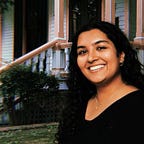Making the Most of Small UX Workshop Groups
Working as part of a fully remote team, one of my favorite parts of our user research work is meeting teams in person for a collaborative workshop. It’s an energizing, hands-on way to analyze findings and brainstorm innovative solutions, and it usually brings together people from different teams who don’t typically work together. The amount of workshop participants can vary, depending on team sizes and how interested people are in participating in the workshop.
However, we’ve found that the number of workshop attendees does not directly impact workshop strength or success. What does matter is who is in the room.
Throughout a typical workshop, participants will take notes on user sessions, organize those notes through an affinity mapping exercise, identify themes in user behaviors, and brainstorm solutions to the highest priority themes. Having a variety of stakeholders and viewpoints helps make the most of these activities. Even in situations where we couldn’t get everyone, just having one spokesperson from various teams proved very helpful in refining brainstormed ideas into realistic post-workshop iterations.
Case 1
For example, in a project with a well-known global organization based in DC, we were tasked with conducting a UX evaluation of 3 of the organization’s data platforms. Each data platform was managed by different teams within the organization so it was important to us to have team members from each of those teams present at the workshop. Participant turnout on the workshop day was lower than expected, and we lost some people throughout the day, but we still managed to have each platform represented.
Case 2
In a separate project, we were working with another DC-based organization for a UX evaluation of an online tool. The entire team was less than 5 people, and everyone in the room was aligned on problems with the tool prior to watching the research. In other words, the people in the room were not the people who needed convincing to change the online tool, with support from viewing real user research.
While this might seem like a strange scenario to find yourself in, the workshop day was a tremendous success. The participants were engaged, took a plethora of notes, and organized them to identify underlying themes of the user issues identified. The camaraderie and alignment between them allowed them to elevate the root of the user issues and identify the most significant problem areas to brainstorm solutions for. They brainstormed high-impact changes, tackling the deepest roots of the users’ pain points. Our workshop day even went over by one hour because the team was so engrossed in their ideas and action plan.
The biggest strength of that workshop team was the familial, relaxed nature of the team. It brought mutual respect to all aspects of the workshop day (discussing user behaviors, identifying underlying causes of usability issues, and iterating on solutions).
To make sure their great work didn’t get lost after the workshop day, and that it did reach the final decision-makers who were not in the room, we assisted the team in creating an executive summary deck. This included edited videos of the user sessions, which highlighted the online tool’s major barriers to usability, and an overview of the solutions from the workshop.
Bottom line: Focusing on the strengths of the workshop group allows us to bring out the best in each other.
If you can’t get all of the stakeholders in the room, can you get some from the most relevant teams? If you can’t get everyone from a team, can you get at least one person to represent the group? I’ve found that workshops don’t require perfection. At the most basic level, providing the space for people to gather around, listen to real users, and work together to create solutions is enough to bring exciting energy to a project.
